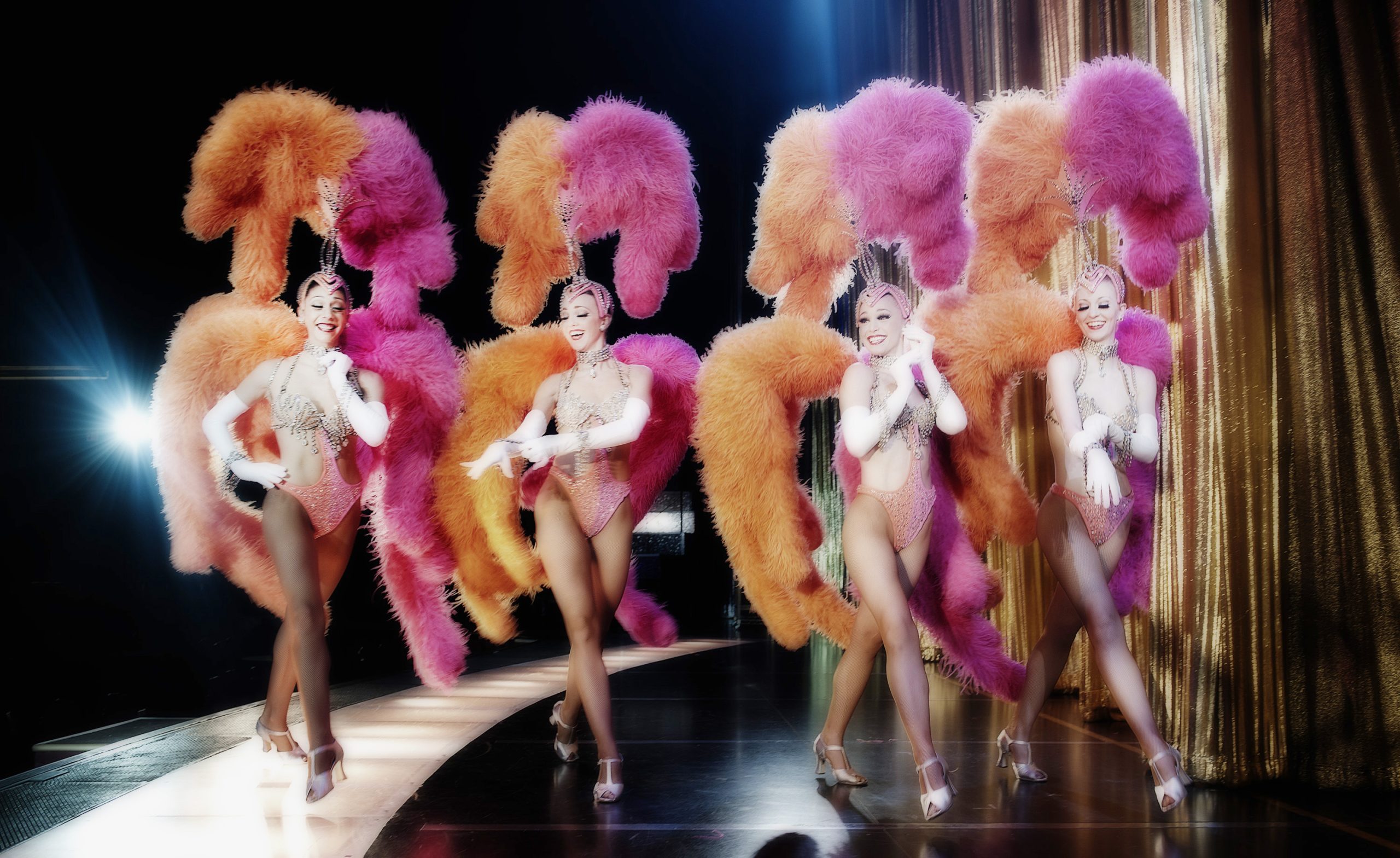VEGAS MYTHS RE-BUSTED: Showgirls Still Dance on the Strip
Posted on: January 12, 2024, 08:04h.
Last updated on: January 11, 2024, 10:22h.
EDITOR’S NOTE: “Vegas Myths Busted” now publishes new entries every Monday, with a bonus Flashback Friday edition. Today’s entry in our ongoing series originally ran on Oct. 14, 2022.
One important thing to know about real showgirls is that they’re elite athletes trained in classical dance who perform nightly in Las Vegas Strip musical productions.

Another important thing to know about real showgirls is that they no longer exist. They haven’t since 2016, which is when the last Vegas showgirl show, “Jubilee!” at Bally’s, closed after 35 years.
All the showgirls you currently see along the sidewalks of the Las Vegas Strip are either paid models or street performers posing for photos in exchange for tips.
The notion that there’s still full-time employment for women who high-hoof in glamourous outfits and heavy headdresses is a myth. It’s a myth whose persistence is understandable. Last August, when the City of Las Vegas saw fit to replace the two 25-foot showgirl signs that welcomed visitors downtown, what did it replace them with? Two 50-foot showgirl signs.
How the Showgirl Went Extinct
From the ’50s through the ’80s, nearly every major casino had a showgirl show. The Tropicana had “Folies Bergère.” Bally’s had “Jubilee!” The Stardust had “Lido de Paris.” The Desert Inn had “Pzazz!” The Dunes had “Casino de Paris.” The MGM Grand had “Hallelujah Hollywood.” Most of these featured a topless element, but that was never the main attraction.
Their inspiration was from the Parisian cabaret shows,” Diane Palm, a former “Jubilee!” dancer, dance captain, and company manager told Casino.org. “The showgirl shows were artistically beautiful and imparted a taste of opulence, imagination, and spectacle. Like the big MGM Hollywood musicals, they were big, splashy extravaganzas with lots and lots of performers singing and dancing. In addition to showgirls, they had female and male dancers, singers, lead performers, specialty acts, and live orchestras or bands.”
Some internet experts blame the demise of the showgirl on woke culture and its opposition to oppressive female stereotypes. Others say it’s because the era of the big Hollywood musicals went the way of the dodo (to quote a once-popular phrase that’s gone that same way).
While there’s some truth to both ideas, what rendered the showgirl extinct was the corporatization of the Las Vegas Strip. Once the power shifted from occasionally mafia-backed millionaire casino owners to shareholder-beholden corporate executives, the countdown to the final curtain began.
The hotels financed showgirl shows, and they weren’t cheap. They cost up to $10 million per show to design and, with their union casts of hundreds, $1 million or more per year to stage. And this was back in the ’70s!
“We had a cast of 128 performers when we opened ‘Jubilee!’” Palm recalled. “Pete Menefee designed 20 dresses just for our Titanic sequence, and those 20 dresses cost $250K. We had jewelry that was imported from Europe that was designed and made in Paris, and by master jewelers. We had feathers sourced from all over the world. Money was no object,” she said.
When Money Became an Object
Until the early ’80s, hotel owners never required showgirl shows to recoup their spending on them. They were considered loss leaders, their true purpose being to draw gamblers into casinos and keep them there. Back then, gambling still accounted for about 75% of an average casino’s revenue. That’s why so many members of every showgirl show audience were comped – as they were for drinks, meals, and hotel rooms.
Today, that revenue stream has flipped, with nongambling sources accounting for 75%. Instead of paying to stage their shows, corporate owners in the ’80s decided to make independent producers pay them to rent their showrooms.
Once many Vegas shows became “four-walled” – forced to pay entirely for themselves with their box-office sales – not a single producer volunteered to stage a showgirl show. Instead, they brought in essentially what Vegas remains known for today: superstar music residencies, traveling companies from Broadway-proven productions, and the strange wonder of Cirque du Soleil.
Last Showgirl Bastions?
It can be argued that showgirls are still healthily dancing on the Strip in “Vegas The Show” at the 423-seat Saxe Theatre in the Miracle Mile shopping mall. But that production merely uses a smattering of showgirls in a smattering of its songs to demonstrate showgirls in their historical Vegas context, much like museums of natural history do with other extinct animals.
It can also be argued that the showgirl lives on in the attempt to update her image via the sexy-dance production numbers of younger headliners Britney Spears, Jennifer Lopez, and Gwen Stefani, whose last residency featured backup dancers dressed as French showgirls.
According to Palm, though, those are weak arguments.
“You can dress up as showgirls, but that’s not the same as performing in the production shows that were such a rich part of Las Vegas’ cultural history.
“That tradition is over,” she said.
Look for “Vegas Myths Busted” every Monday on Casino.org. Visit VegasMythsBusted.com to read previously busted Vegas myths. Got a suggestion for a Vegas myth that needs busting? Email corey@casino.org.
Related News Articles
VEGAS MYTHS RE-BUSTED: Hoover Dam Bodies
VEGAS MYTHS RE-BUSTED: Howard Hughes Bought Silver Slipper Just to Dim its Sign
VEGAS MYTHS RE-BUSTED: Casinos Pump in Extra Oxygen
Most Popular
VEGAS MYTHS BUSTED: Golden Gate is the Oldest Casino in Vegas
Las Vegas Overstated F1 Race’s Vegas Impact — Report
Most Commented
-
End of the Line for Las Vegas Monorail
— April 5, 2024 — 90 Comments -
Mega Millions Reportedly Mulling Substantial Ticket Price Increase
— April 16, 2024 — 6 Comments















